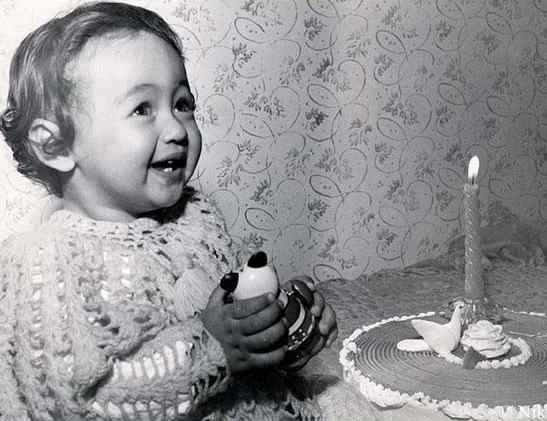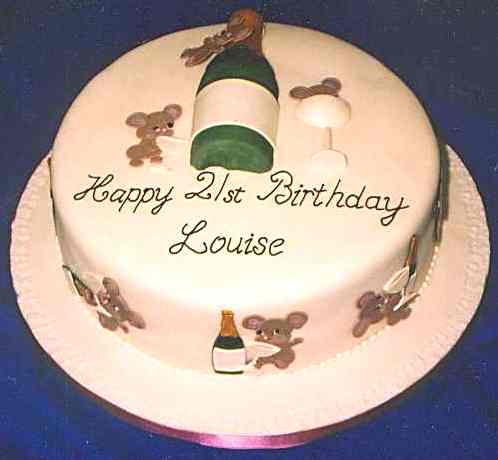|
BIRTHDAY PARTIES
|
||||||||||||||||||||||||||||||||||||||||||||||||||||||||||||||||||||||||||||||||||||||||||||
|
There are times which call for a special celebration to mark the passing of a milestone, such as a birthday. A birthday is the date on which a person is born, marking the day we pass into the outside world from our Mother's protection. It is customary in many cultures to celebrate the anniversary of one's birthday, with a meal of by having a birthday party with family and/or friends. Gifts are often given to the person celebrating their birthday. It is also customary to treat people specially on their birthday, either generally acceding to their wishes, or subjecting them to a ritual. So why not enjoy your special day in a completely different environment, such as an exotic tent from Arabian Tents?
1st Birthday cake and candle - "I made it"
Western private birthday traditions
History of celebration of birthdays in the West
It is thought that the large-scale celebration of birthdays in Europe began with the cult of Mithras, which originated in Persia but was spread by soldiers throughout the Roman Empire. Before this, such celebrations were not common; and, hence, practices from other contexts such as the Saturnalia were adapted for birthdays. Because many Roman soldiers took to Mithraism, it had a wide distribution and influence throughout the empire until it was supplanted by Christianity.
Birthday celebrations were rare during the Middle Ages but saw a resurgence with the advent of the Reformation. During this period, they were seen as a good way to transfer customs from the saint's days to other dates not linked to the newly repudiated veneration of saints.
Even today, the celebration of birthdays is not universal in the West; in addition to those people preferring name day celebrations, Jehovah's Witnesses do not celebrate either, considering them to be pagan festivals along with Christmas and Easter. Many adults loathe celebrating it as it reminds them that they are getting progressively older. And in some activities that are not year-round, birthday acknowledgements may be discouraged because of some birthdays not falling during the season.
In most English-speaking countries it is traditional to sing the song Happy Birthday to You to the honored person celebrating his birthday. The Happy Birthday Song melody is thought to be the most frequently sung melody in the world. Similar songs exist in other languages such as "Lang zal hij/zij leven" (and several others) in Dutch, "Zum Geburtstag Viel Glück" in German, "Cumpleaños feliz" in Spanish, "Sto lat" in Polish and "Tanti Auguri a te" in Italian. This happens traditionally at a birthday party while someone brings a birthday cake into the (often darkened) room.
21st Birthday party cake - freedom to choose
Typical birthday party decorations include balloons, streamers, and confetti.
For special birthdays and for when the number of candles might be considered impractical or a fire hazard, special candles might be substituted for the many individual candles. These candles are in the shape of a numeral; for example, on the fifth birthday there may be one candle on the cake in the shape of the numeral 5, and on the fiftieth birthday there may be two candles on the cake, one in the shape of the numeral 5 followed by the other in the shape of the numeral 0.
Testing
Since every year of age can be seen as a minor transition, this can be accompanied by some traditional initiation rite such as a birthday spanking, after which the honoree may in some traditions receive a "pinch to grow an inch." It is also traditional in schools in some areas of Britain to 'bump' people on their birthday. This involves them being hoisted face up by arms and legs and allowed to fall; pulling on the limbs restrains the fall so that the victim does not quite hit the ground. This is repeated for the number of the times when equaled to their birthday age. On one last hoist the celebrant is often allowed to fall to the ground on their backs. A less painful way is to be lifted in the air while sitting on a chair. Then the last lift is usually made higher than the others.
A similar tradition in schools are 'birthday beats' or 'birthday bashings' in which the birthday child receives a number of punches on their arm that equals their age (e.g. 14 punches on the arm for a 14-year-old). Usually it is followed with a 'one for luck' punch which tends to be harder than the rest. Birthday beats are not often malicious but sometimes can be considered bullying and may ruin a child's special day. All hits can be given either on the day of the birthday, or the day following the birthday (in which case it would be called "belated birthday beats").
40th Birthday party cake - in mid swing
Special birthdays
Notable birthdays can include:
In many Asian countries the 14th birthday is celebrated as the day one becomes a man, or a woman, in society.
Official/Alternative birthdays and name day
Some notables, particularly Monarchs, have on a fixed day of the year an official birthday which do not match their actual birthday, but on which celebrations are held. Examples are:
While it is uncommon to have an official holiday for a republican head of state's birthday, this can become a permanent posthumous honour, especially in the case of a so-called father of the fatherland, e.g. George Washington (best known as Presidents' Day, which sounds like the incumbent's party; also celebrated in the US is Lincoln's Birthday)
In cases where a mythical figure's actual birthday is unknown, it is common for a particular date to be substituted.
People who are born on the leap day 29 February, which only occurs during leap years, often celebrate their birthday in other years on the 28th (the last day of February), or 1 March (the first day they have, measured in whole years, a new age).
In some Roman Catholic and Eastern Orthodox countries such as France, Hungary, or Greece, it is common also to have a 'name day'/'Saint's day'. This is celebrated in much the same way as a birthday, but is held on the official day of a saint with the same Christian name as the birthday boy/girl; the difference being that one may look up a person's nameday in a calendar, or easily remember common namedays (e.g. John or Mary); however in pious traditions, the two were often made to concur by giving a newborn the name of a saint celebrated on its birthday, or even the name of a feast, e.g. Noel or Pascal (French for Christmas and "of Easter"). In some countries, name days are celebrated with much more elaborate festivities than birthdays; in the past, birthdays often weren't celebrated at all in those countries.
In school, a half-birthday or other unbirthday is sometimes celebrated for those whose birthdays do not fall on a school day (especially for birthdays falling during holiday and vacation periods).
All racehorses traditionally celebrate their birthday on (i.e. calculate their age in years from) 1 August in the Southern Hemisphere, and on 1 January in the Northern Hemisphere.
50th Birthday party cake - steady
Birthday gift symbolism
Birthstones
A birthstone is a gift of a precious material (jewelry, mainly gemstones; themselves traditionally associated with various qualities) that symbolizes the month of birth (in the Gregorian Calendar).
It is sometimes also called birthday stone (cf. infra; but that word is, confusingly, sometimes used as a synonym for an anniversary gift, which is related to the recipient's age, i.e. year of birth).
There have been many different sets of birthstones used throughout history and in different cultures. In 1912, in an effort to standardize them, the American national association of jewelers, Jewelers of America, officially adopted the following list; it is currently the most widely used list in the United States and many other locations, including Australia and Thailand. Some alternates have been adopted to be a less expensive substitute for a cut stone.
Tanzanite was added to December by the American Gem Trade Association in 2002.
The birthstone seems to originate from Biblical times. The Breastplate of Aaron, referred to in Exodus 39:10-14:-
The precise list of birthstones however can be found in Revelation 21:19-20 where the foundation stones of the new Jerusalem are listed, in the order of the Roman calendar:
Zodiac stones
An astrological version of the birthstones exists using the twelve zodiac signs instead of the twelve calendar months. Listed below are the dates for the tropical sun signs and their associated birthstone.
Birth flowers
Just as there are alternatives with birthstones, there are also alternatives with birth flowers. For example, October is often listed as Calendula (Marigold) , but is also occasional noted as being rose or camellia.
Technical issues
A person's birthday is usually recorded according to the time zone of the place of birth. Thus people born in Samoa at 11:30pm will record their birthdate as one day before UTC and those born in the Line Islands will record their birthdate one day after UTC. They will apparently be born two days apart, while some of the apparently older ones may be younger in hours. Those who live in different time zones from their birth often exclusively celebrate their birthdays at the local time zone.
Birthday stones
While this word has also been used as synonym of Birth stone (see above), there is a separate list of assignment according to the day of the week of the recipient's birth:
LINKS and REFERENCE
PARTY ESSENTIALS @ PARTY BOX .CO.UK
DECORATIONS
Wall, ceiling & door decoration
PARTY BAGS
FANCY DRESS
|
||||||||||||||||||||||||||||||||||||||||||||||||||||||||||||||||||||||||||||||||||||||||||||
|
This website is Copyright © 2013 Kismet Girls Trust. All rights reserved. All other trademarks are hereby acknowledged. |



